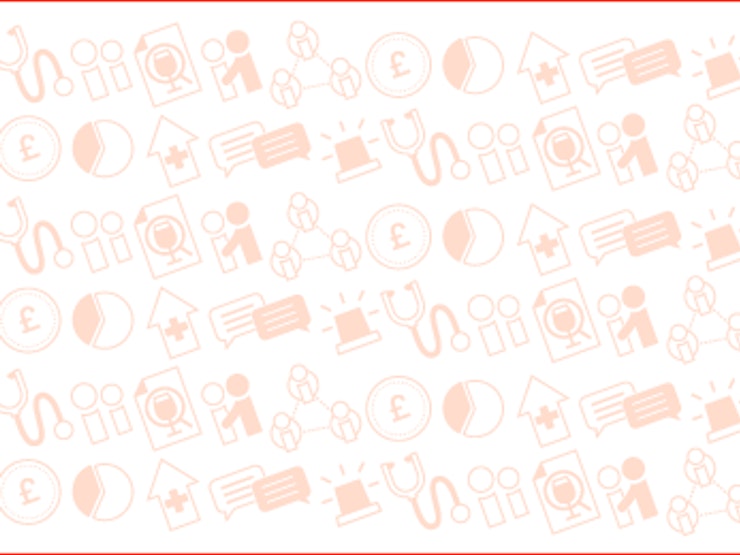Note: This report was funded and/or written by our predecessor organisation, the Alcohol Education Research Council (AERC).
29 August 2009
Key findings
- News reporting of alcohol-related stories focuses predominantly on negative outcomes of drinking, but also on stories involving drunken celebrities.
- Long-term health impacts have become a key frame for news reporting of alcohol. Health professionals, especially liver specialists, have become established as sources for journalists reporting on alcohol issues. Meanwhile, addiction and alcoholism play a relatively minor role in the framing of news stories.
- Cheap alcohol and supermarket sales are more commonly blamed for heavy drinking in recent news coverage than 24-hour licensing, suggesting a shift of emphasis from the period around the introduction of the 2003 Licensing Act. This view is also reflected in survey responses.
- Alcohol advertising features regularly in newspapers, with many adverts promoting cheap supermarket discounts, revealing a tension between the perspective of news reports on the issue of pricing and the prominence of such adverts.
- Opinion columns and editorials tend to reject policies which target pricing, while television news depicts pricing policies as unpopular with the public at large.
- Non-problematic, social drinking features in news reporting but is heavily outweighed by negative stories. There is evidence of a gender divide in the visual representation of drunkenness, especially in newspapers.
- Survey and focus group respondents felt that news reporting exaggerates negative outcomes and displays widespread gender bias.
- Focus group participants interpreted social marketing campaigns unpredictably, sometimes finding them amusing.
- There is a widespread assumption, in both news reporting and survey responses, that drunkenness is a kind of national trait – operating outside of legislative or other cultural influences. This may contribute to a significant normative standard of behaviour.
- Behaviours presented in the news media and sensible drinking campaigns as harmful are often experienced as simply embarrassing.
- Social networking sites have become an important element of drinking culture among many young people. In particular, the uploading and ‘tagging’ of photographs taken during drinking sessions is commonplace.
Introduction
In recent years, there has been widespread coverage of binge drinking among young people in the UK news media. However, there is only limited research into either how news reporting frames stories about alcohol (e.g. Hansen, 1986 and 2003; Pendleton et al., 1991), or whether this reflects the experiences of young drinkers. As part of a pilot study into methods for addressing these questions, newspaper and television coverage of alcohol-related stories were analysed to identify how those stories were contextualised, which sources were quoted, what images accompanied alcohol-related news stories and so forth. At the same time, a survey and focus groups were carried out to assess attitudes to both drinking and the coverage of alcohol in the news. The study didn’t attempt to prove a causal relationship between news reporting and attitudes among young drinkers – as many researchers have pointed out, trying to demonstrate such effects is extremely difficult (Martin and Mail, 1995; Baillie, 1996; Cherrington et al., 2006). However, it did reveal marked patterns in the way alcohol is represented in the news, as well as the degree of scepticism young people have towards news reporting of these issues. It also revealed the extent to which young people ‘report’ on their own drinking through the use of social networking sites such as Facebook.
Methods
Seven daily newspapers and four daily television news broadcasts were analysed over two periods: 20th Dec 2008 – 2nd Jan 2009 and 15th – 22nd March 2009. This allowed for a comparison between Christmas and New year, when alcohol consumption is traditionally high, and a period not culturally associated with drinking. The second sample period, however, covered the moment when the Chief Medical Officer, Sir Liam Donaldson, put forward recommendations for minimum alcohol unit pricing. The Prime Minister and leader of the Opposition swiftly rejected these proposals, but they garnered widespread media coverage and extensive debate in the opinion columns of national newspapers.
186 alcohol-related newspaper stories were identified along with nineteen television news stories. A further twelve television news items contained passing or incidental references to drink. All selected stories were then analysed to identify the key themes, the sources quoted, accompanying imagery, and both the effects and causes of excessive drinking where these were explicitly identified.
231 students at a UK university completed a questionnaire about their news consumption, attitudes to alcohol and response to media representations of youth drinking. A further 32 took part in focus group discussions which also touched on responses to sensible drinking campaigns in the media.
Findings
- News reporting of alcohol-related stories focuses predominantly on negative outcomes of drinking, but also on stories involving drunken celebrities.
- Long-term health impacts have become a key frame for news reporting of alcohol. Health professionals, especially liver specialists, have become established as sources for journalists reporting on alcohol issues. Meanwhile, addiction and alcoholism play a relatively minor role in the framing of news stories.
- Cheap alcohol and supermarket sales are more commonly blamed for heavy drinking in recent news coverage than 24-hour licensing, suggesting a shift of emphasis from the period around the introduction of the 2003 Licensing Act. This view is also reflected in survey responses.
- Alcohol advertising features regularly in newspapers, with many adverts promoting cheap supermarket discounts, revealing a tension between the perspective of news reports on the issue of pricing and the prominence of such adverts.
- Opinion columns and editorials tend to reject policies which target pricing, while television news depicts pricing policies as unpopular with the public at large.
- Non-problematic, social drinking features in news reporting but is heavily outweighed by negative stories. There is evidence of a gender divide in the visual representation of drunkenness, especially in newspapers.
- Survey and focus group respondents felt that news reporting exaggerates negative outcomes and displays widespread gender bias.
- Focus group participants interpreted social marketing campaigns unpredictably, sometimes finding them amusing.
- There is a widespread assumption, in both news reporting and survey responses, that drunkenness is a kind of national trait – operating outside of legislative or other cultural influences. This may contribute to a significant normative standard of behaviour.
- Behaviours presented in the news media and sensible drinking campaigns as harmful are often experienced as simply embarrassing.
- Social networking sites have become an important element of drinking culture among many young people. In particular, the uploading and ‘tagging’ of photographs taken during drinking sessions is commonplace.
Implications
Further research is needed into the way alcohol issues are constructed in public discourse, and especially news reporting (see also Hansen and Gunter, 2007). Health professionals appear to have emerged as key sources for news coverage but longitudinal analysis would be needed to establish whether this is the case, and what lessons may be learned from it for future media advocacy campaigns.
The precise nature of the relationship between news representations and public perceptions remains uncertain even where it has been analysed closely (e.g. Törrönen, 2003; Yanovitsky and Stryker, 2001). Research in this area needs to take account of the unpredictable nature of audience reception, and to continue to consider media representations in their broader cultural contexts.
Alcohol pricing has emerged as a concern both in news reporting and among drinkers. However, national characteristics are also commonly blamed for encouraging heavy consumption. In a British context, social norms research may need to take account of this in addition to employment or education-specific normative expectations.
Scepticism towards news reporting is fuelled by a perception that messages condemning drunkenness appear alongside images of drunken celebrities, in the context of programmes otherwise celebrating drunkenness, or close to adverts promoting cheap supermarket deals. News reporting may have a limited impact on public attitudes where audiences feel it presents contradictory messages.
Definitions of harm contained in sensible drinking messages do not always accord with those recognised by the target audience. How messages are interpreted and used, rather than simple recall, should be the criteria for evaluating the success of such campaigns.
The documenting of drunkenness on social networking sites has become a key element of drinking culture among young people. This would benefit from future analysis – especially as regards the relationship between ‘drunk’ photographs of friends on Facebook and the proliferation of drunken celebrity photographs in newspapers and gossip magazines.
References
Baillie, R. (1996) ‘Determining the effects of media portrayals of alcohol: going beyond short term influence’, Alcohol and Alcoholism 31.3, pp. 235-42
Cherrington, J., Chamberlain, K. and Grixti, J. (2006) ‘Relocating alcohol advertising research: Examining socially mediated relationships with alcohol’, Journal of Health Psychology 11.2, pp. 209-22
Hansen, A. (1986) ‘The portrayal of alcohol on television’, Health Education Journal 45.3, pp. 127-31
Hansen, A. (2003) The Portrayal of Alcohol and Alcohol Consumption in Television News and Drama ProgrammesResearch Report (London: Alcohol Concern)
Hansen, A. and Gunter, B. (2007) ‘Constructing public and political discourse on alcohol issues: Towards a framework for analysis’, Alcohol and Alcoholism 42.2, pp. 150-7
Martin, S. and Mail, P. eds. The Effects of Mass Media on the Use and Abuse of Alcohol, National Institute on Alcohol Abuse and Alcoholism – Research Monograph 28 (Bethesda MD: National Institutes of Health
Pendleton, L., Smith, C., and Roberts, J. (1991) ‘Drinking on television: a content analysis of recent alcohol portrayal’, British Journal of Addiction 86, pp. 769-74
Törrönen, J. (2003) ‘The Finnish press’s political position on alcohol between 1993 and 2000’, Addiction 98.3, pp. 281-90
Yanovitsky, I. and Stryker, J. (2001) ‘Mass media, social norms and health promotion efforts: a longitudinal study of media effects on youth binge drinking’, Communication Research 28.2, pp. 208-39


